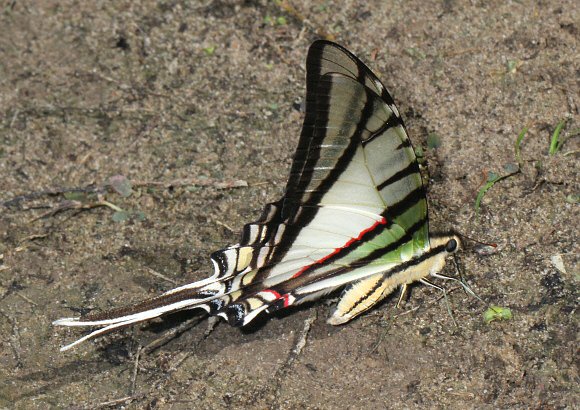
Introduction
Butterflies in the genus Protesilaus are characterised by having translucent white wings, tinged on the underside with green or yellow, and marked with narrow black stripes. The forewings are decidedly triangular in shape, and the hindwings adorned with a single long sword-like tail. The bodies are relatively short, and the antennal tips strongly recurved.
Protesilaus glaucolaus can easily be confused with other Swordtail species. One feature which helps differentiate between the various Protesilaus species is the length of the dark bars on the forewing. In this species the 4th bar ( in ascending order from the wing base ) extends to about one-third way down the discal cell. Other distinguishing characteristics include the shape of the red tornal spot, and the configuration of the very thin submarginal crescents on the hindwings.
P. glaucolaus was first described and named by the legendary naturalist Henry Walter Bates, who famously postulated what is now known as the Batesian theory of butterfly mimicry.
This species occurs from Panama to Peru.
Habitats
This species occurs in lowland rainforest at elevations from about 100-800m.
Lifecycle
To be completed.
Adult behaviour
Swordtails such as Protesilaus and Protographium are migratory in behaviour, following river courses as they travel.
Males can often be seen gathered in groups on sandbanks, filter-feeding on dissolved minerals by continually pumping water though their bodies. This species invariably aggregates with other Swordtail species, often joined by various Pierids.
